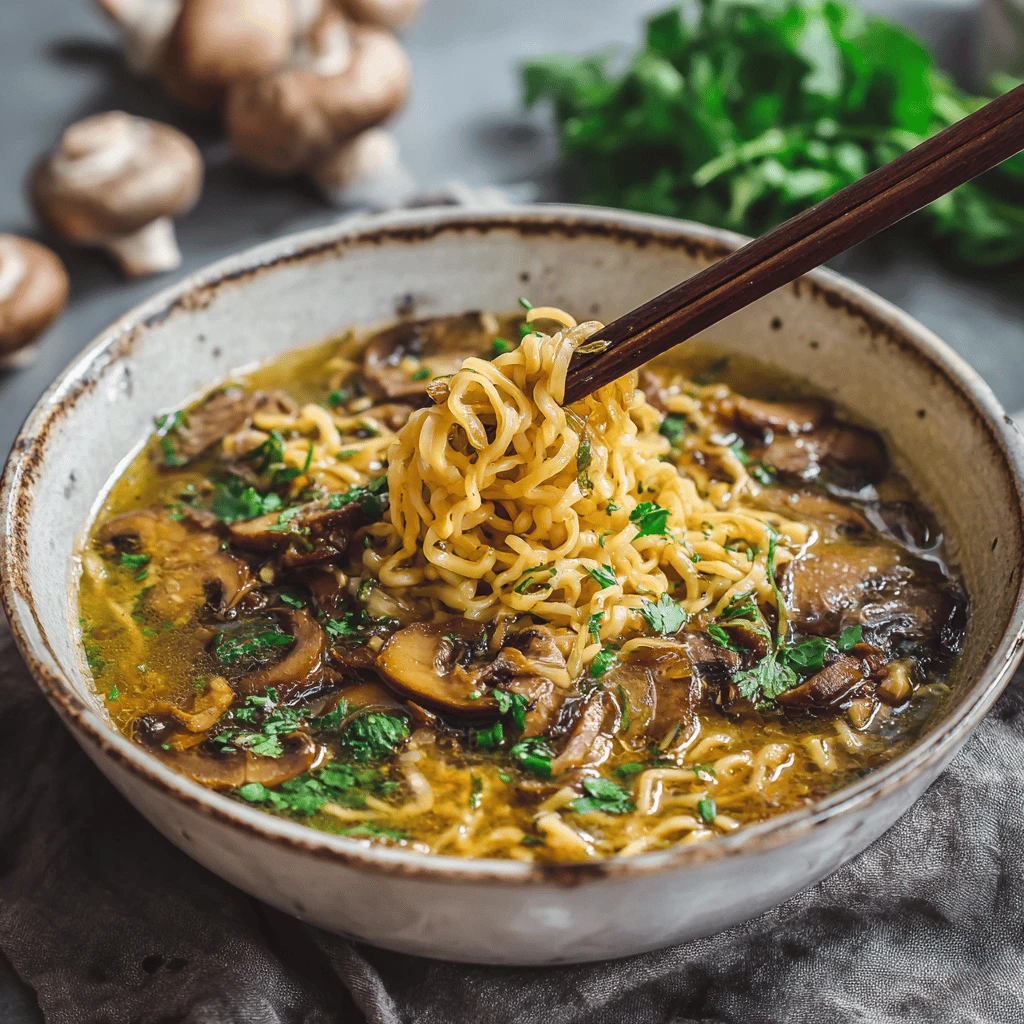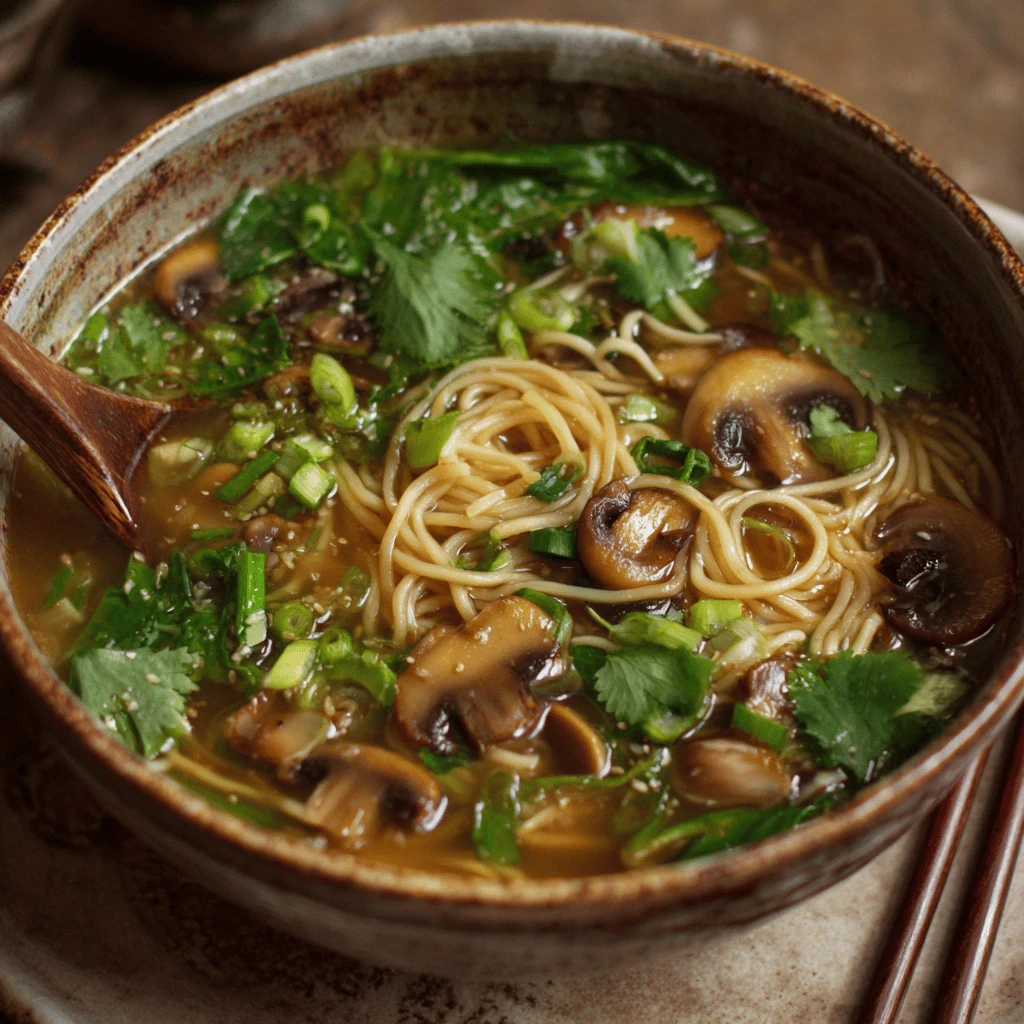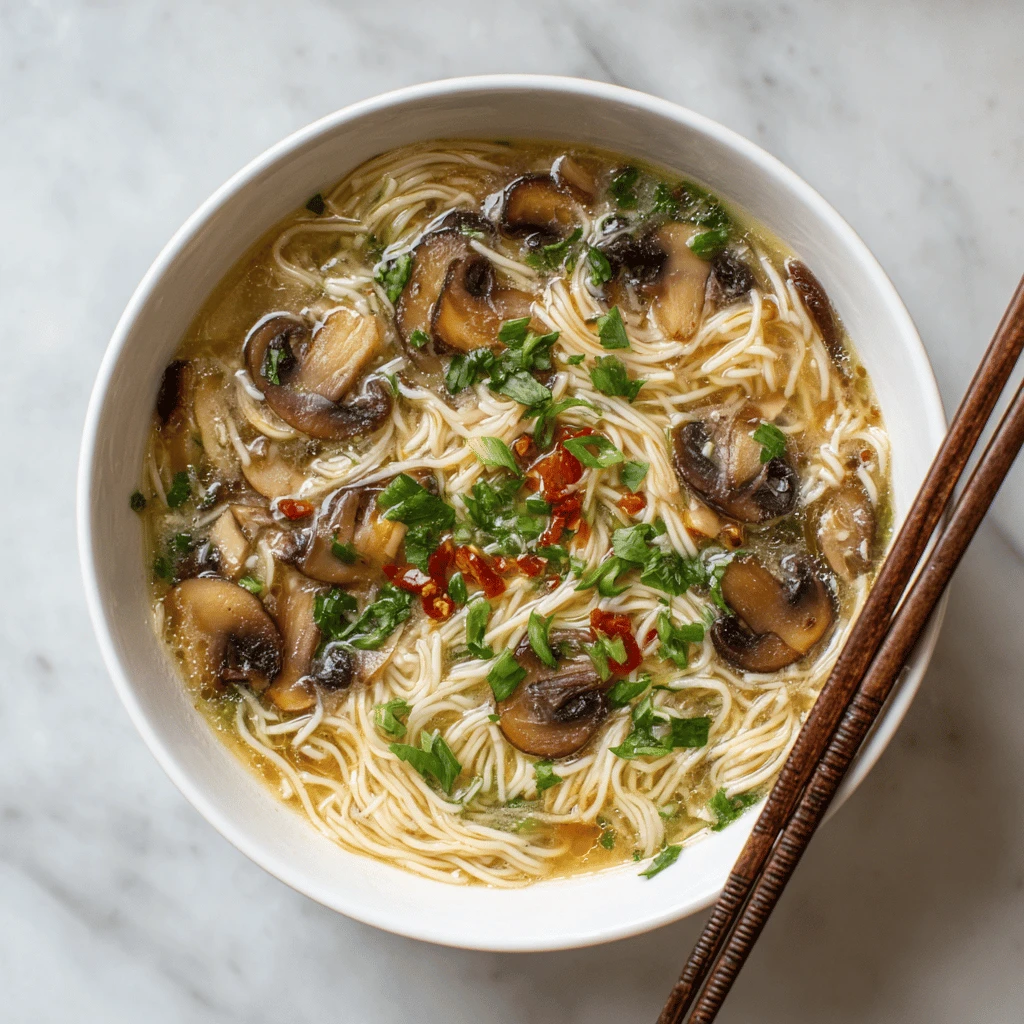Easy Mushroom Noodle Soup
Mushroom noodle soup. The very name conjures images of comfort, warmth, and delicious simplicity. This humble dish transcends cultures, offering a hearty and satisfying meal that’s both easy to prepare and endlessly customizable. Whether you’re a seasoned chef or a kitchen novice, this guide will walk you through creating the perfect mushroom noodle soup, exploring variations, tips, and tricks along the way.
Unlocking the Flavor: The Foundation of a Great Soup
The magic of mushroom noodle soup lies in its broth. A flavorful broth forms the base upon which all other ingredients build. Here’s how to create a rich and savory foundation:
Choosing Your Mushrooms
The type of mushrooms you choose dramatically impacts the soup’s flavor profile. Consider these popular options:
- Cremini (Baby Bella): These offer a mild, earthy flavor, making them a versatile choice for any soup.
- Shiitake: Known for their umami richness, shiitake mushrooms lend a deep, savory depth to the broth. Dried shiitake, rehydrated and sliced, provide an even more intense flavor. Reserve the soaking liquid to add to the broth!
- Oyster Mushrooms: These delicate, slightly sweet mushrooms add a unique texture and subtle seafood-like flavor.
- Portobello: With their meaty texture and robust flavor, portobello mushrooms can add substance to your soup. Chop them finely for optimal integration.
- Maitake (Hen of the Woods): Offering an earthy, slightly peppery flavor, maitake mushrooms add complexity and visual appeal.
Feel free to experiment with a combination of mushrooms for a more nuanced flavor profile.
Building the Broth: A Symphony of Aromatics
Beyond the mushrooms, aromatics play a crucial role in creating a flavorful broth. Consider these elements:
- Onions and Garlic: These classic aromatics form the base of most savory dishes. Sauté them gently in olive oil or butter until softened and fragrant.
- Ginger: A small piece of fresh ginger, minced or sliced, adds a warm, subtle spice and complexity.
- Soy Sauce or Tamari: These provide umami and saltiness, enhancing the overall flavor. Use low-sodium options to control the salt level.
- Vegetable Broth (or Chicken Broth): Opt for a high-quality vegetable broth or chicken broth as the liquid base of your soup. Homemade broth is always best, but store-bought options can work in a pinch.
- Dried Herbs: Thyme, bay leaf, or rosemary add depth and aroma to the broth. Remember to remove the bay leaf before serving.
- Miso Paste (Optional): A spoonful of miso paste stirred in at the end adds a savory, umami boost and creamy texture.
The Broth-Building Process:
1. Sauté your chosen aromatics in a pot until softened and fragrant.
2. Add the mushrooms and cook until they release their moisture and begin to brown.
3. Pour in the broth and bring to a simmer.
4. Add soy sauce (or tamari) and dried herbs.
5. Simmer for at least 30 minutes to allow the flavors to meld. Longer simmering times (up to an hour or more) will result in a richer, more complex broth.
6. Strain the broth for a clear soup, or leave the mushrooms in for a heartier texture.
Noodles and Beyond: Adding Texture and Substance
Once your broth is ready, it’s time to add the noodles and other ingredients that will transform it into a complete meal.
Choosing the Right Noodles
The type of noodle you choose affects both the texture and cooking time of the soup. Popular choices include:
- Egg Noodles: These classic noodles are readily available and cook quickly. Their slightly eggy flavor complements the mushrooms beautifully.
- Ramen Noodles: These Asian-inspired noodles add a chewy texture and can be found in various flavors. Discard the seasoning packet (or use it sparingly) and focus on the quality of the broth.
- Udon Noodles: Thick and chewy, udon noodles provide a satisfying bite and hold their shape well in the soup.
- Rice Noodles: A gluten-free option, rice noodles come in various widths and textures. They cook quickly and have a neutral flavor that allows the mushrooms to shine.
- Soba Noodles: Made from buckwheat flour, soba noodles have a nutty flavor that pairs well with earthy mushrooms.
Adding Vegetables and Protein
While the focus is on mushrooms and noodles, adding other vegetables and a source of protein can enhance the nutritional value and overall satisfaction of the soup. Consider these options:
- Spinach or Kale: These leafy greens add nutrients and color. Stir them in during the last few minutes of cooking until wilted.
- Carrots and Celery: These classic soup vegetables add sweetness and crunch. Dice them finely and add them to the pot along with the onions and garlic.
- Tofu: Cubed tofu adds protein and a pleasant texture. Choose firm or extra-firm tofu that will hold its shape in the soup.
- Edamame: Shelled edamame adds protein and a pop of green.
- Chicken or Shrimp (Optional): If you’re not vegetarian, cooked chicken or shrimp can be added for extra protein.
Cooking the Noodles to Perfection
Follow the package directions for cooking your chosen noodles. In general, it’s best to cook the noodles separately and add them to the soup just before serving to prevent them from becoming soggy. However, some noodles (like thin rice noodles) can be cooked directly in the soup during the last few minutes of cooking.
Customizing Your Soup: Variations and Flavor Enhancements
One of the best things about mushroom noodle soup is its versatility. Here are some ways to customize the recipe to your liking:
Spicy Kick
Add a pinch of red pepper flakes, a drizzle of chili oil, or a spoonful of gochujang (Korean chili paste) to the broth for a spicy kick.
Creamy Texture
Stir in a dollop of cream cheese, sour cream, or coconut milk at the end of cooking for a richer, creamier texture. Be careful not to boil the soup after adding dairy products, as they may curdle.
Lemon or Lime Zest
A squeeze of fresh lemon or lime juice and a sprinkle of zest brightens the flavors of the soup and adds a refreshing touch.
Fresh Herbs
Garnish with fresh herbs like parsley, cilantro, or scallions for added flavor and visual appeal.
Different Broth Options
Experiment with different broth options. Beef broth can add a heartier flavor, while dashi (Japanese seaweed broth) adds umami and complexity.
Wine Infusion
A splash of dry sherry or white wine added to the broth while simmering can enhance the depth of flavor.
Tips and Tricks for Soup Success
- Don’t overcrowd the pot: If you’re making a large batch of soup, work in batches to sauté the vegetables and mushrooms. Overcrowding the pot will lower the temperature and prevent browning.
- Season as you go: Taste the soup at various stages and adjust the seasoning as needed. Salt, pepper, soy sauce, and other seasonings should be added gradually to avoid over-seasoning.
- Simmer, don’t boil: Simmering the broth gently allows the flavors to meld without making the ingredients tough.
- Store leftovers properly: Cool the soup completely before storing it in an airtight container in the refrigerator. It will keep for 3-4 days.
- Freeze for later: Mushroom noodle soup freezes well. Store it in freezer-safe containers or bags for up to 3 months. Thaw overnight in the refrigerator before reheating. It’s best to freeze without the noodles and cook them fresh before serving.
Serving and Enjoying Your Creation
Once your mushroom noodle soup is ready, it’s time to serve and savor the fruits of your labor. Ladle the soup into bowls and garnish with your favorite toppings. Consider a drizzle of sesame oil, a sprinkle of toasted sesame seeds, or a dollop of Greek yogurt. Serve with a side of crusty bread or a simple salad for a complete and satisfying meal. Enjoy!
Frequently Asked Questions (FAQ)
Can I use frozen mushrooms in mushroom noodle soup?
Yes, you can use frozen mushrooms. However, keep in mind that they may release more water during cooking, so you may need to adjust the liquid in your recipe. Sauté them longer to evaporate excess moisture.
How can I make my mushroom noodle soup thicker?
You can thicken your soup by adding a cornstarch slurry (1 tablespoon cornstarch mixed with 2 tablespoons cold water) to the simmering broth. Alternatively, you can blend a portion of the soup with an immersion blender and then stir it back into the pot. Adding a small amount of mashed potatoes or other cooked starches can also help thicken the soup.
Can I make this soup vegan?
Absolutely! Simply use vegetable broth, ensure your noodles are egg-free, and omit any non-vegan toppings or additions like cream cheese. Consider adding tofu or edamame for protein.
What are some good toppings for mushroom noodle soup?
Great toppings include fresh herbs (parsley, cilantro, scallions), toasted sesame seeds, chili oil, a squeeze of lemon or lime juice, a dollop of Greek yogurt (if not vegan), or crispy fried shallots.
How long does mushroom noodle soup last in the refrigerator?
Mushroom noodle soup will last for 3-4 days in the refrigerator, stored in an airtight container.




